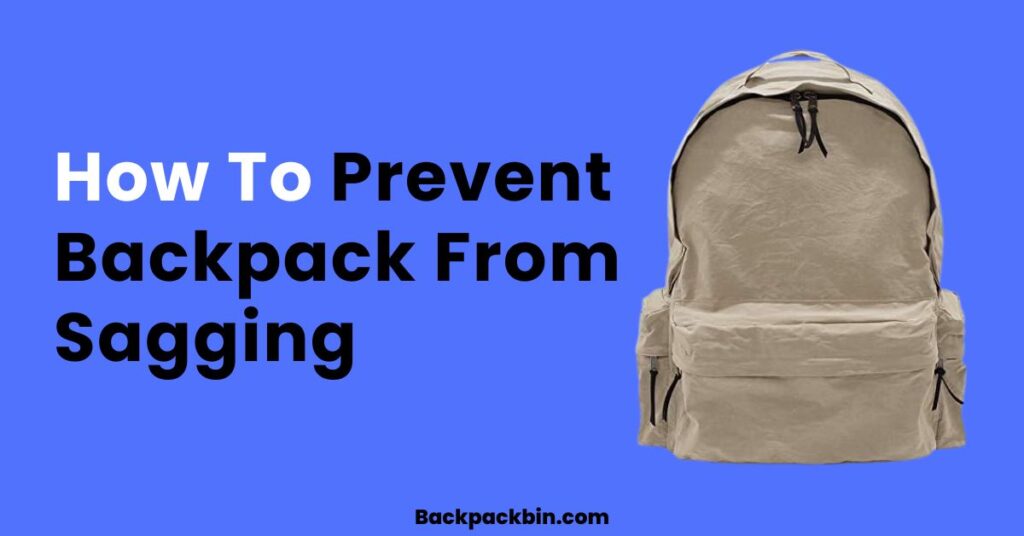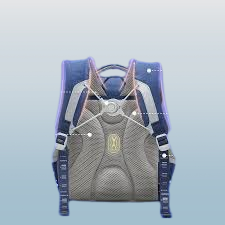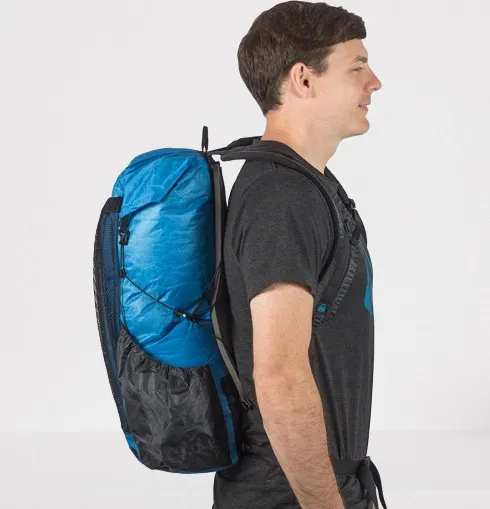How To Prevent Backpack From Sagging

While backpacks are convenient for transporting items, they may become a major pain in the neck if they begin to droop. Besides making the person who wears it uneasy, it also has the potential to put undue stress on the spine upper back, and neck. It is important to know how to prevent backpack from sagging.
This article will explain why bags sag, ways to recognize a drooping backpack, preventative measures, and lasting solutions to this problem. We’ll talk about how to prevent backpacks from sagging and potential alternatives to carrying one.
Related: How to fix a backpack strap without sewing.
What Factors Result in Backpack Sagging:
When carrying a rucksack, many people experience the annoying issue of sagging. The bag’s fabric and construction, the load it must carry, and one’s physical build all play a role in causing this problem.
The way efficiently a rucksack maintains its form and protects its belongings is highly dependent on its construction and materials. Fabrics that are too fragile or weren’t trimmed lengthwise might lead the bag to droop.
Moreover, uneven weight distribution, overloading your bag, and the weight of the stuff stored in the bag can result in backpack sagging. Apart from that if you place your items in the wrong spot it will tend to sag more.
Tips on How To Prevent Backpack From Sagging:
Backpack that sags don’t look and feel good. Not only in appearance, but losing straps results in neck, shoulder, and back pain which makes your hiking experience daunting.
Why face this issue when you can fix it by following a few easy steps? Let’s have a look at the solution:
1. Check The Uneven Strap:

You can prevent your backpack from sagging by fixing the loose straps. Adjustable straps allow you to make adjustments according to your preference. All you need to do is pull the straps back and forth until it fits your shoulder and waist perfectly.
If you wish to make your bag last longer than ever, then avoid overloading it. Overloading your bag may result in instant sagging which results in damaging your bag.
2. Choose Right Size:
The size of your bag is the biggest factor to consider while making your next purchase. In case you buy a bag for football types of equipment and overload it with heavier stuff, your bag will droop.
So make sure to be mindful while choosing the bag size. Pick a bag that fits nicely on your shoulder and hip area and can bear the weight of stuff.
3. Inspect The Lumber Support:

If you are about to put heavy stuff in your bag then don’t forget to use lumber support. Lumber support helps you evenly balance the weight on both sides. Not only that, employing lumber support is effective in preventing sagging. You should also check how much weight a backpack holds.
4. Invest In Good Waist Strap:

The waist strap is an advanced and reliable way to prevent sagging. Waist straps are a helpful way to prevent shoulder and neck pain since waist straps reduce stress on the neck. Moreover, waist straps offer good support to the lower body and help even weight distribution. Using a waist strap prevents your backpack from sagging and makes you feel comfortable even after a long hike. Plus, you should also know how to properly wear a hiking backpack or a backpack for any other purpose.
5. Use Padding:
Padding is a good way to make your backpack feel comfortable. Padding makes your backpack feel soft and adds durability. If you add the required amount of padding to the lower part of the backpack then it will make sure to maintain balance and doesn’t move while hiking. Not to mention padding keeps your backpack away from drooping.
Frequently Asked Questions:
Here are the most commonly asked questions about how to prevent backpack from sagging and slipping:
1. How to prevent backpack straps from slipping?
First of all, you should adjust the strap to fit properly. Invest in a good-quality sternum strap with anti-slip padding. Connect the sternum strap to your shoulder strap and avoid any shoulder spillage. Furthermore, strap clips or grips are also some of the accessories you can use to avoid slipping off your backpack.
Related: How to Stop Backpack Straps from Loosening Up.
2. How much you should load your backpack?
Overloaded backpacks not only damage your bag but it cause back pain. Make sure the weight of your bag is 10 to 15 percent of your body weight. Do not put the whole weight on any of the sides instead try to distribute the weight evenly across your backpack.
Put heavy items close to your back, this will help you to carry more weight with less effort without any shoulder pain.
3. How do I keep my backpack straight?
The crucial thing is to back havier items close to your backpack. This will help to keep your posture and backpack straight. You should also divide the weight evenly and regularly adjust and balance the load to keep your backpack straight. Lastly, you can also buy compression straps to secure contents and make it straight.
4. Why does my backpack lean to one side?
The imbalanced weight distribution mostly causes the backpack to lean to one side. So you should check whether the weight is distributed evenly or not. Another reason could be the incorrect adjustment of straps. Your posture and wearing pattern can also cause the backpack to lean to one side.
Finally, there could be structural issues with your backpack. Either it is built baldly without any proper measures or anything else. If this is the case then you should change your backpack as soon as possible.
Conclusion:
In conclusion, how to prevent backpack from sagging? To help prevent your bag from sagging you must pick the one which is not only comfortable but also fits your shoulder and hip area.
Moreover, the quality of fabric and design should also be your priority. Prevent your backpack from damage by using lumber support, waist strap, and bottom padding. By following these easy steps your bag will evenly distribute weight on both sides and in turn, reduce sagging.


